Among Edward Green’s most iconic styles, there is no place for Monk shoes. But Fulham has many fans. Monk should be the last category that people would like to own, but once you enter the door, you will immediately fall in love. Because its convenience and formal/informal degree, then it is also fashionable which is not so universal in classic dress shoe field. Let us have a look at this pair.
Unboxing
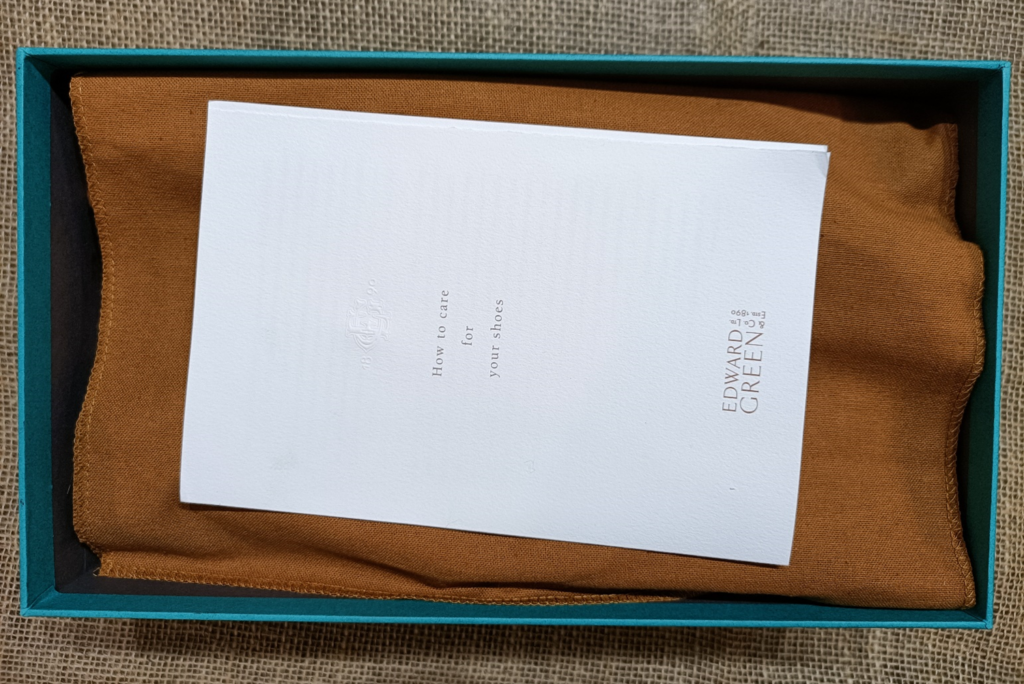
The cover has been seen too many times. A large card, the contents of which have been photographed before.
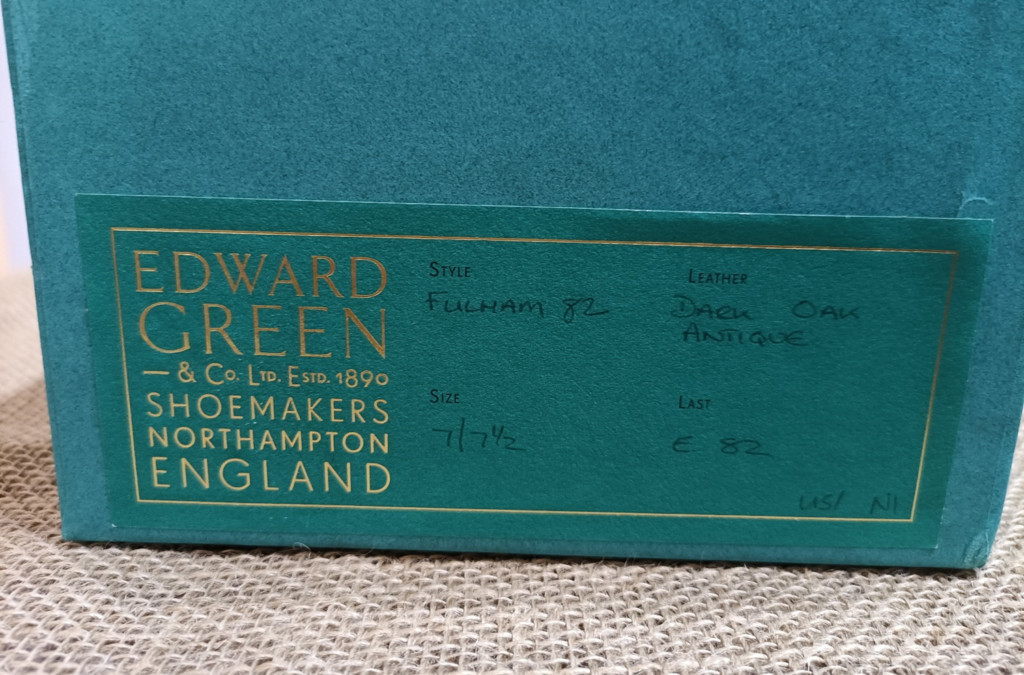
Information of side sticker, style Fulham, leather Dark Oak Antique. size 7/7.5, last 82, width E.

Camel-colored shoe shine cloth and shoe bag.
Last
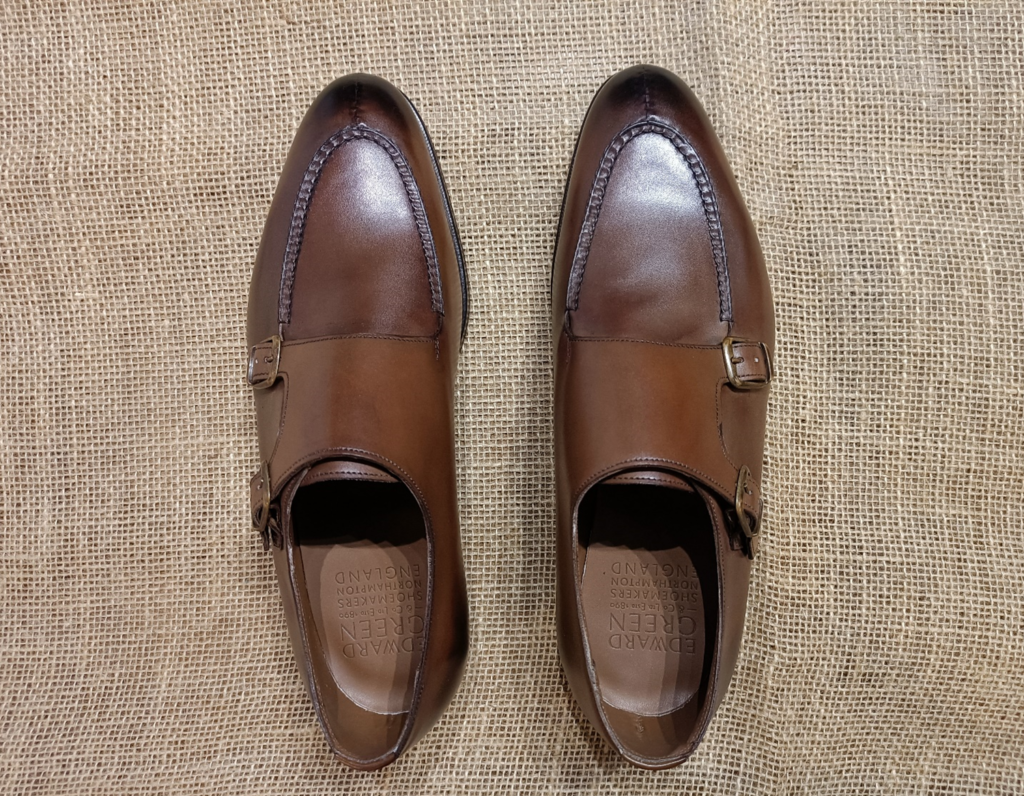
The 82 last is the most popular last of Edward Green, and also the least Edward Green-ish last. the orthodox last of Edward Green should be fat and decades-old round.
As a brand with a history more than 100 years, Edward Green has the least number of lasts of any British brands.
Here’s an Edward Green last legacy, at the courtesy of Tony Gaziano on the StyleForum. Isn’t Tony Gaziano the owner of Gaziano & Girling? Why did he provide Edward Green’s information? Because Tony was working at Edward Green, and his position is quite important.
The first last model which entered the mainstream market was 32, the big round-headed ancestor.
The second 33 last is a square-headed version of the 32 last.
The third is an evolution of 32, Edward Green’s absolute classic, 202 last.
The fourth 606 is a square-headed 202.
The fifth 808 is the evolution of 88 last, elegant square head last. (This is very strange, if 808 is the fifth, then where 88 ranks?)
The sixth 89th last is based on 808 and developed for Ralph Lauren.
The seventh 888 last is based on 202 and fits the foot more closely with a smaller, more elongated head.
The eighth 82 last, the round head version of 888.
888 and 82 which were developed by Tony are not Edward Green’s taste for a reason.
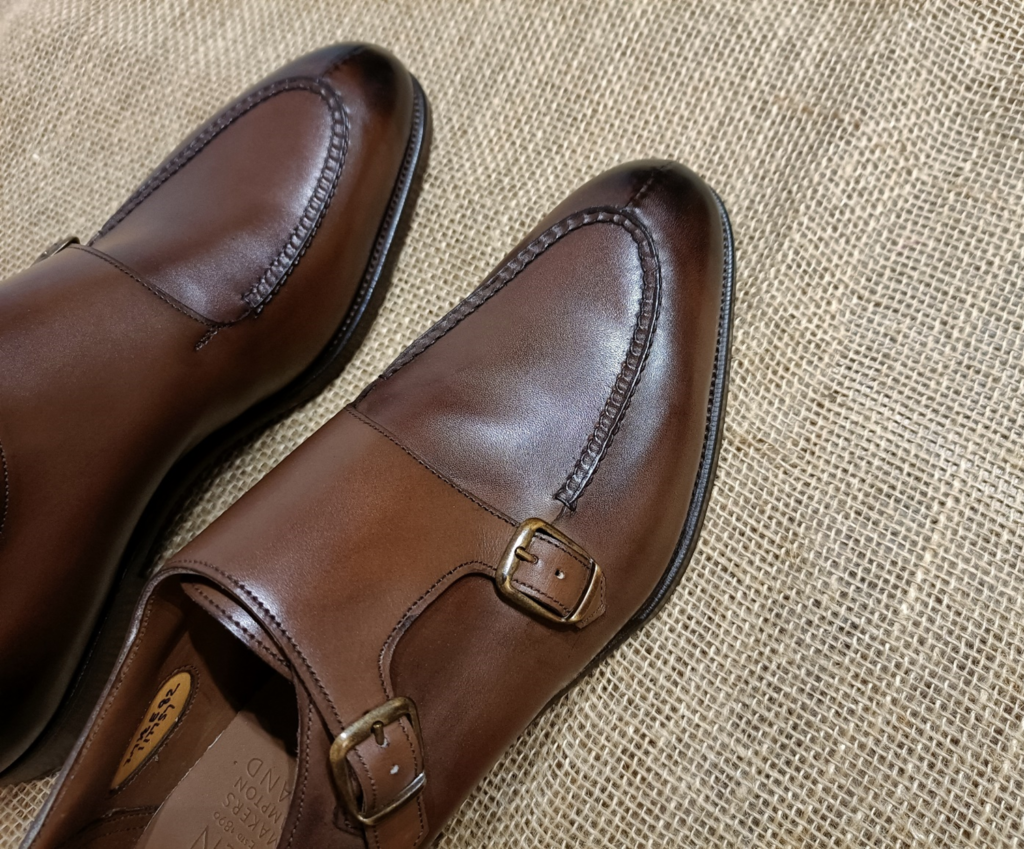
The small head of the 82 last makes me unhappy, in addition, the sudden extrusion of the outer side is also ugly.

The heel wrap is really good.
Pattern
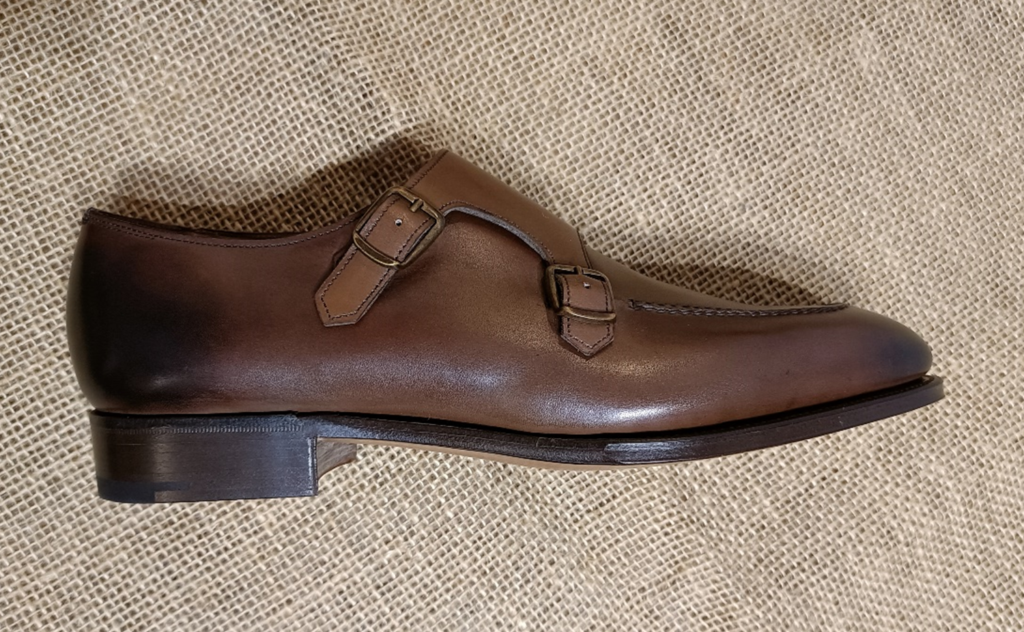
As a double buckle monk, the first thing you see is the distance and angle between two buckles. Fulham is quite moderate, nothing special.
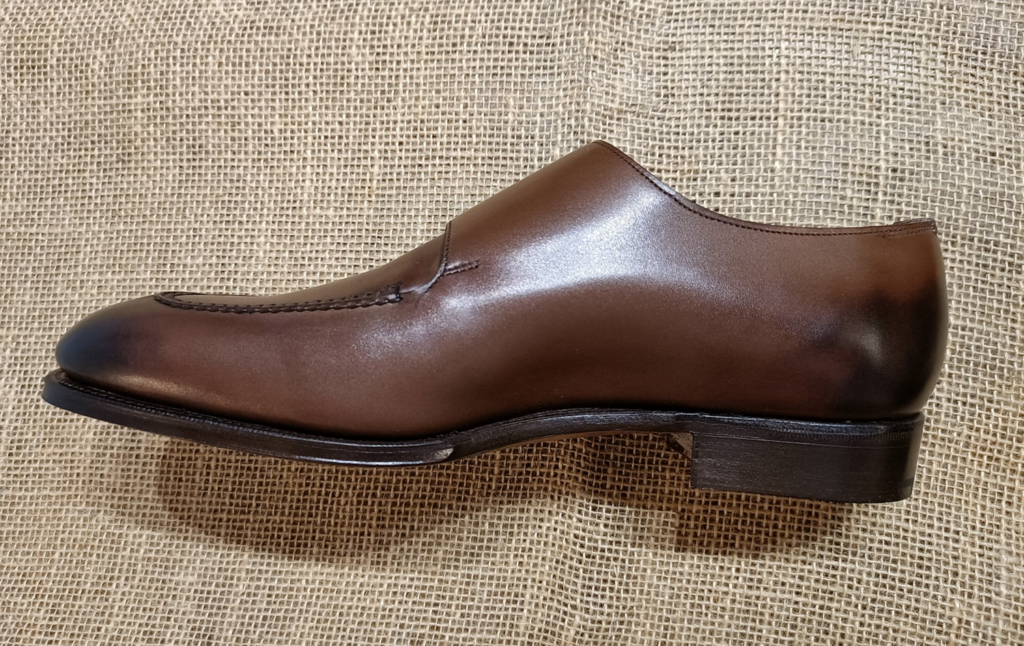
But change to the inside view it is absolutely beautiful. What is beautiful? The unbroken completeness of the upper.
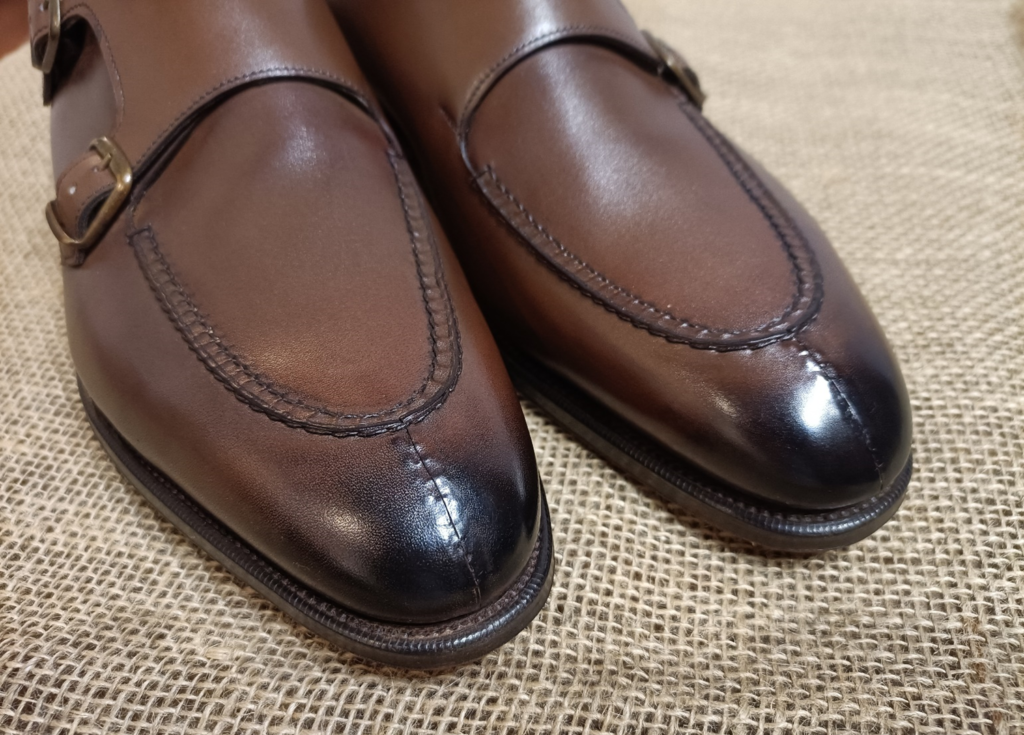
On this upper, we find the stitch methods that Edward Green is very proud of and has been exclusive to for years, reverse stitching plus buried stitching in the apron area. It is the same as Dover. You can say that Fulham is Dover Monk, just like John Lobb has Phillip Monk and Phillip Loafer.
Transplanting, or generalizing, an iconic craft feature to a different shoe is a great execution, it’s not showmanship, it’s brand building.
Construction
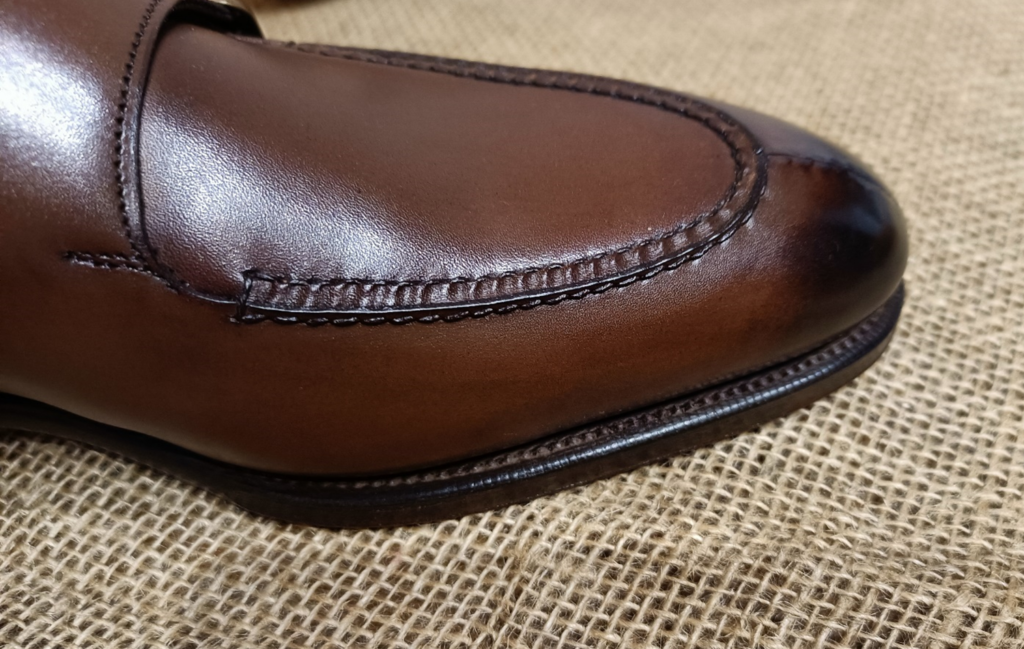
Craftsmanship of Edward Green is highly praised by cobbler and shoemakers. I have not dismantled Edward Green shoes and don’t understand why they say so, but I believe insiders know more details than consumers who only focus on tight stitching and fudge fineness.
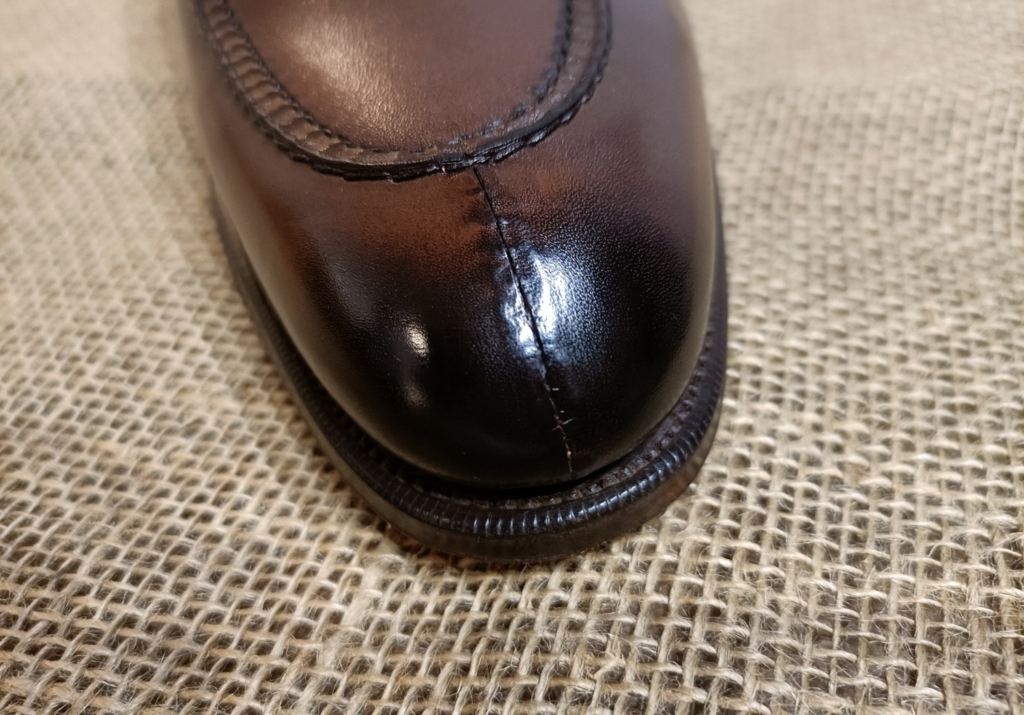
I always felt that the toe welt is grinded a little more.
Outsole
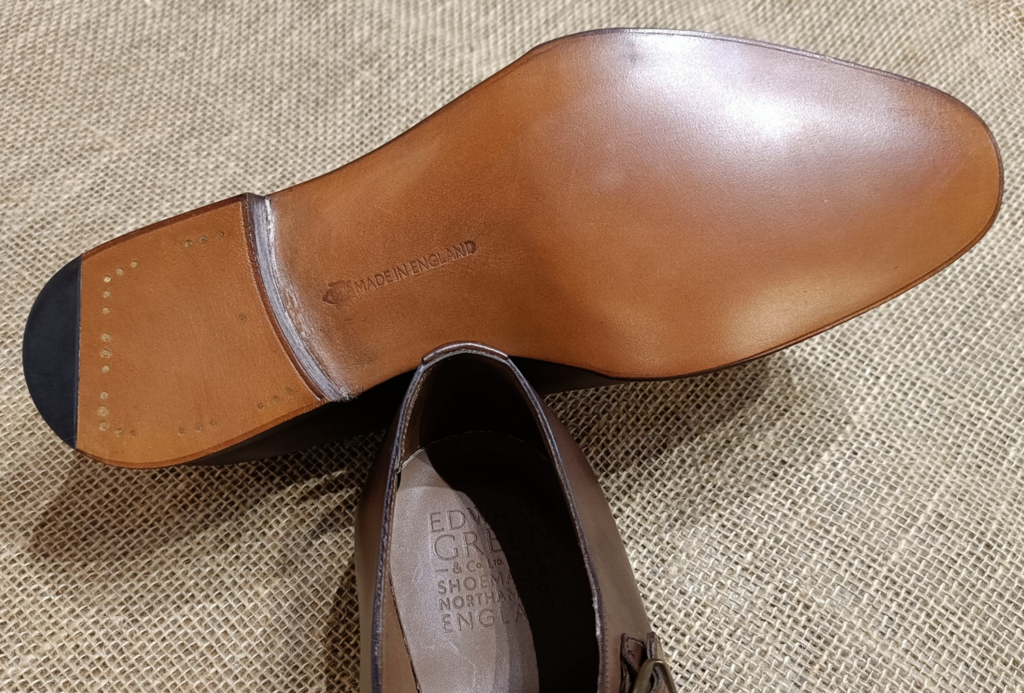
Monochrome soles. I have a deduction that black shoes have two-color sole and all other colors have this mono crust colour sole.
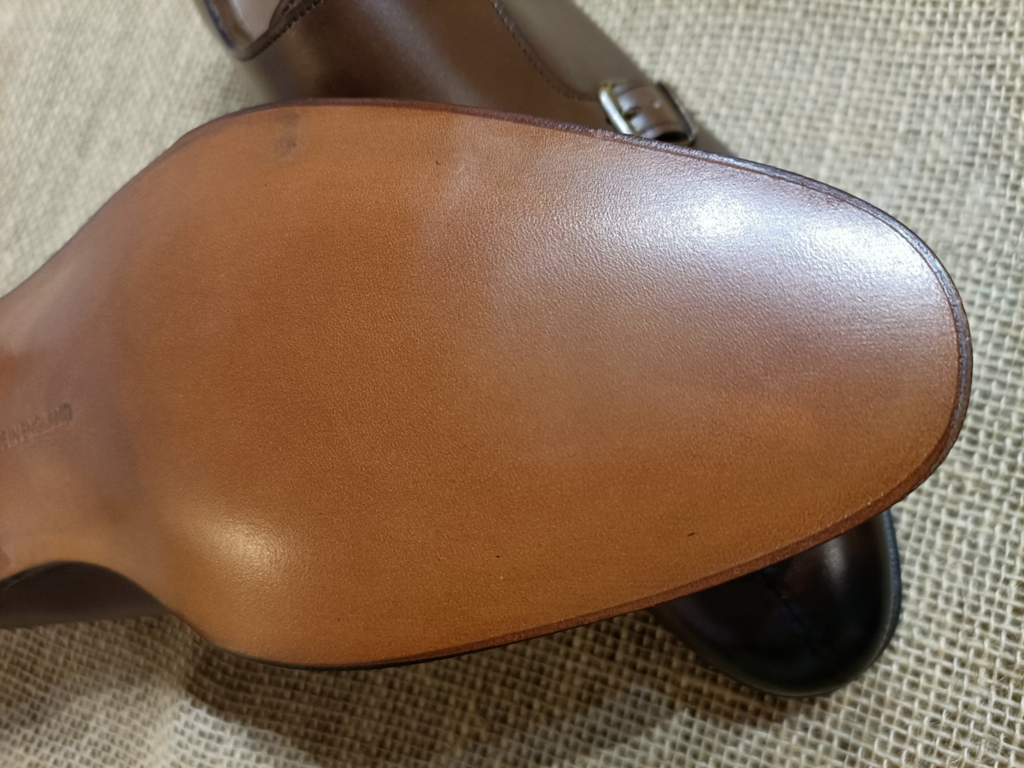
There is one small detail to pay attention to, and that is where the leather covers the back. Most brands cut the leather completely from the side. I can’t say if Edward Green’s way or completely from the edge is better. In terms of production, the level of effort should be similar just goes with different tools.
From the aesthetic point of view, J.M. Weston’s sole has a circle of black paint, similar in appearance but a little more contrast.
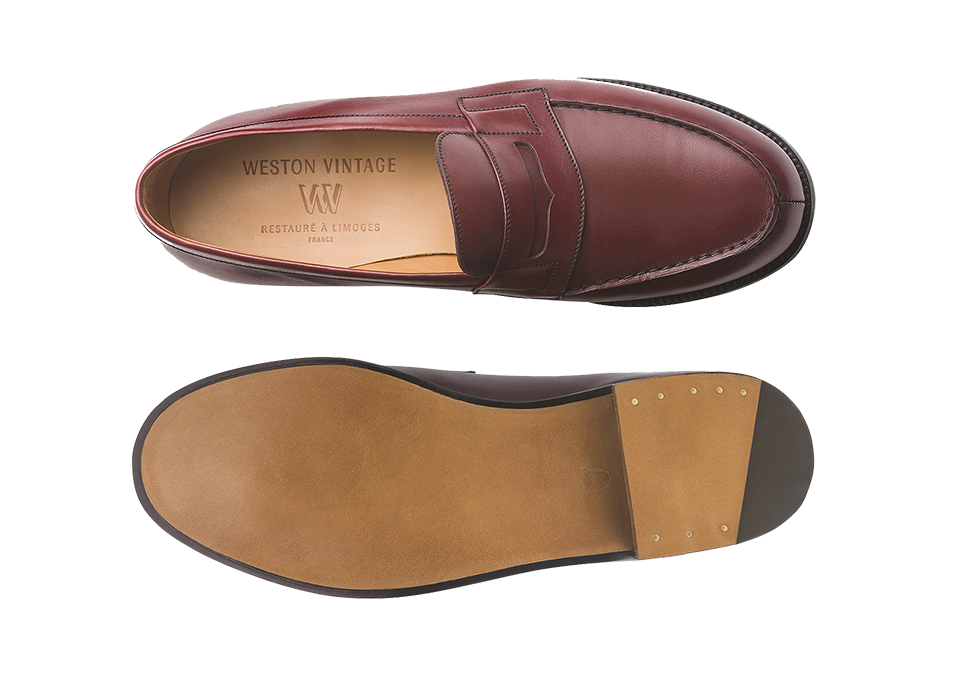
Details
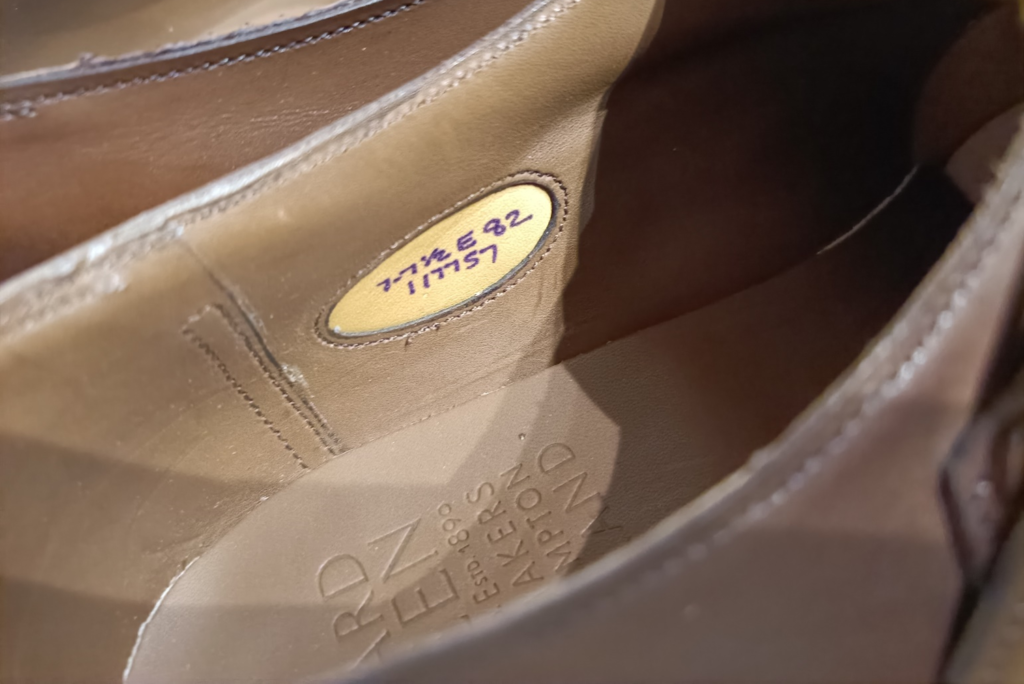
Information is written in a small circle hole on the lining. Style name is missing which is very unfriendly to consumers. I think the way Mattina has is just fine, not a lot of information, but quite enough for the consumer. Style name, last, size.

Summary
Dover does not make me tick, neither does Dover Monk have too much chance. Plus 82 this non-Edward Green and cult last, I shake my head helplessly.

